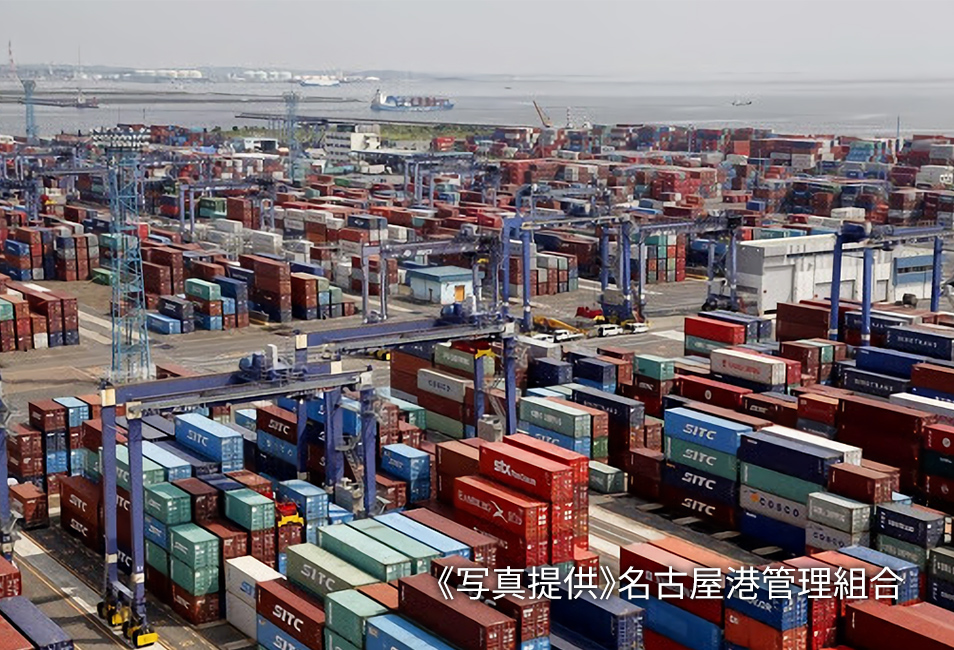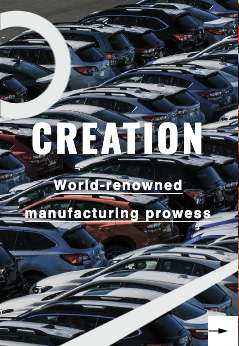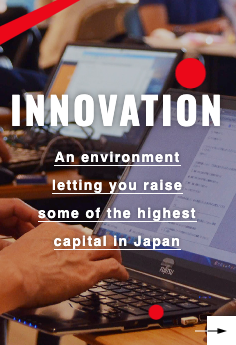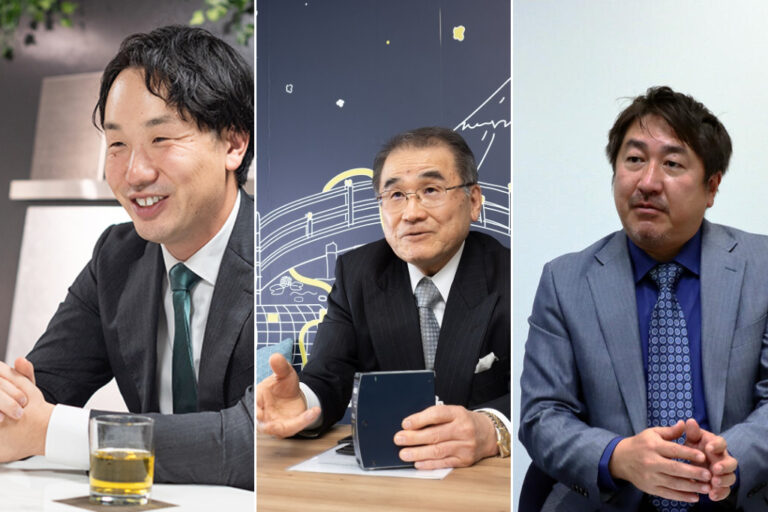
Domestic or international—no matter where to, the secret to easy travel lies in this massive transportation infrastructure
Looking back on Nagoya's history, one can see that even long ago, it flourished as one of the 53 post towns situated along the highly traversed old Tokaido Road. You can also see today how the city continues to expand its strategic position as a transportation hub. It currently offers land, sea, and air transportation, and is especially blessed with its incredible terminal: Nagoya Station—a stopover for bullet trains, conventional trains, trains on the Meitetsu and Kintetsu lines, and long-distance buses, and even visited by nearly 1-million people a day. Travel a mere 30 minutes to Central Japan International Airport (Centrair), and once the Linear Chuo Shinkansen maglev line begins operation, shoot from Nagoya to Tokyo in about 40 minutes or Nagoya to Osaka in about 30 minutes. The city is also home to the Port of Nagoya—a port handling the largest volume of freight in Japan for 17 years running and directly connected to the country's main arteries for land transport—making efficient, integrated land and sea transportation possible. This is a city putting the entire world within your sight while streamlining business expansion.

*1, *2: JR Central website *3: Google survey (2019)
Infinite new chances generated from the center of this super megaregion
After the Linear Chuo Shinkansen starts operation from its proposed date in 2027, the world's widest economic sphere of some 70-million people and super megaregion will be born from the convergence of the three large cities, Tokyo, Nagoya, and Osaka. Access in no time to any and all companies, people, and commodities either domestic or abroad will be possible, putting Nagoya ahead of the times as a city of dreams. Become a part of Nagoya—the city at the center of it all—and take hold of the continuous business opportunities to come.

*4, *5: Mitsubishi UFJ Research and Consulting survey
Linear Chuo Shinkansen
The Linear Chuo Shinkansen will open in 2027, making intercity travel even more convenient.
Once the Linear Chuo Shinkansen opens, travel time between Nagoya and Tokyo will be approximately 40 minutes. Shorter travel times will make transportation even more convenient.
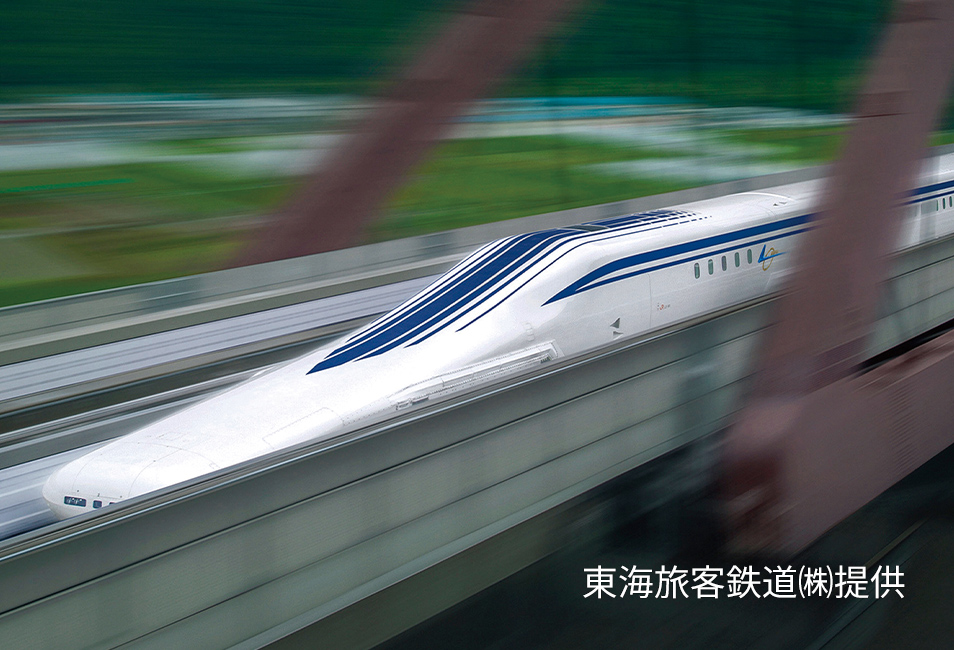
Super Megaregion
Changes Accompanying the Opening of the Linear Chuo Shinkansen
With the partial opening of the Linear Chuo Shinkansen scheduled for 2027, travel time from Tokyo to Nagoya will be significantly reduced from the current approximately 100 minutes to around 40 minutes. Additionally, the Tokaido Shinkansen will gain a redundant system, enhancing resilience against natural disasters. Furthermore, as early as 2037, the full line from Tokyo to Osaka may open, connecting the three major metropolitan areas—Tokyo, Nagoya, and Osaka—in about one hour. This will give birth to the "Super Mega Region," a massive urban zone with a population of approximately 70 million, the largest exchange area in the world. By integrating the strengths and characteristics of each region, this development is expected to create new value across a wide range of fields, including tourism, industry, and regional collaboration. Once the full Linear Chuo Shinkansen is operational, the population within a two-hour access range from Nagoya Station is expected to reach about 64 million—surpassing approximately 62 million from Shinagawa Station and about 48 million from Shin-Osaka Station—making Nagoya the most connected location nationwide.
Chubu Centrair International Airport (Centrair)
Chubu Centrair International Airport ranks among the most user-friendly airports in the world.
Opened in February 2005, Centrair (Chubu Centrair International Airport) is a top-class international airport alongside Narita and Kansai, capable of 24-hour takeoffs and landings. It also offers excellent access—only about 30 to 40 minutes to Nagoya by train or car.
In September 2019, a new terminal building tailored to the LCC (Low-Cost Carrier) business model opened, making the airport even more convenient and comfortable for international travelers.

Port of Nagoya
Port of Nagoya|Japan’s Number One Port in Both Name and Reality, Supporting Manufacturing and Daily Life
Japan’s Number One in Total Cargo Throughput Since 2002!
A leading Japanese port boasting numerous national records, including trade volume and automobile exports. As a comprehensive port equipped with logistics, manufacturing, disaster prevention, exchange, and transportation functions, it connects Japan with approximately 170 countries and regions worldwide. The port area is the largest in Japan, exceeding the combined area of the Tokyo and Yokohama ports.
Furthermore, with each function strategically located, the port can be efficiently utilized for various purposes, such as expanding logistics operations.
